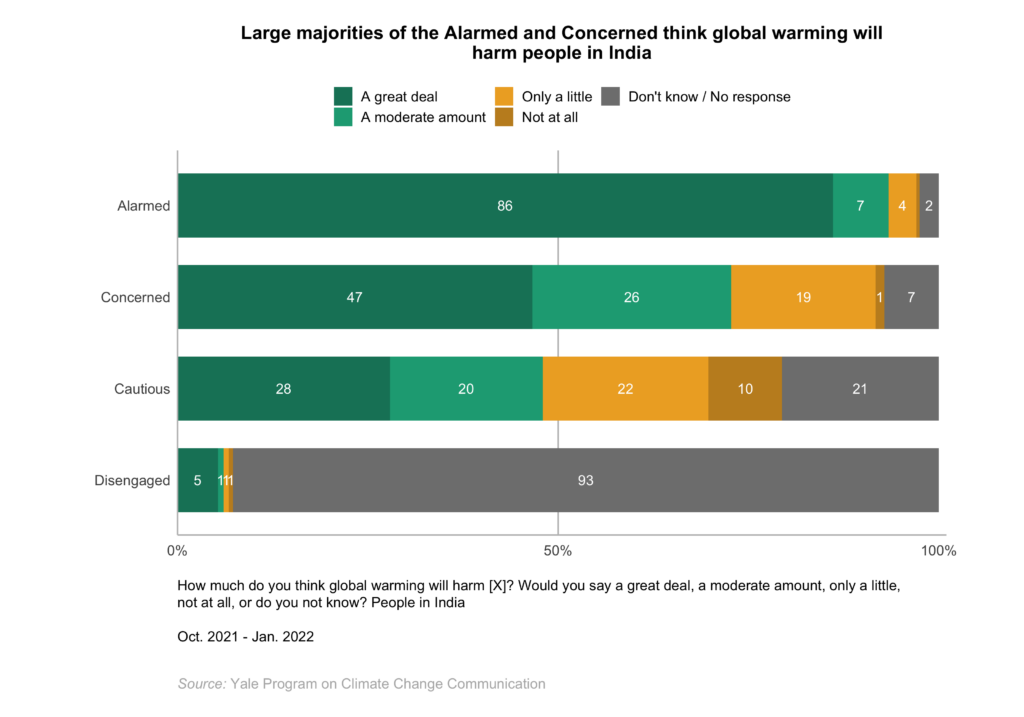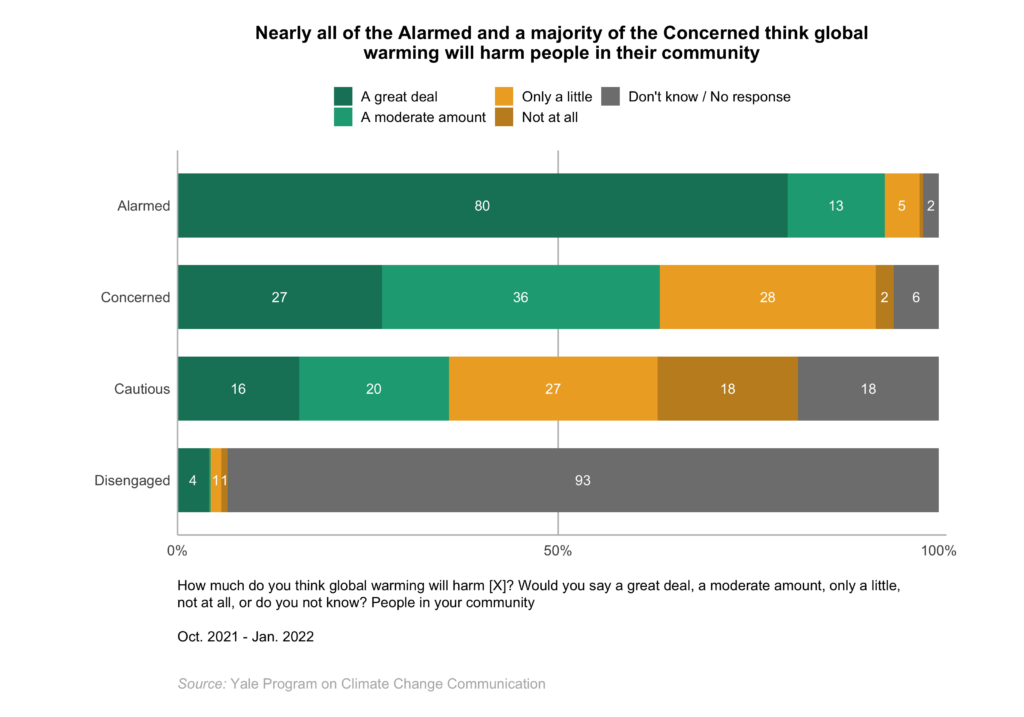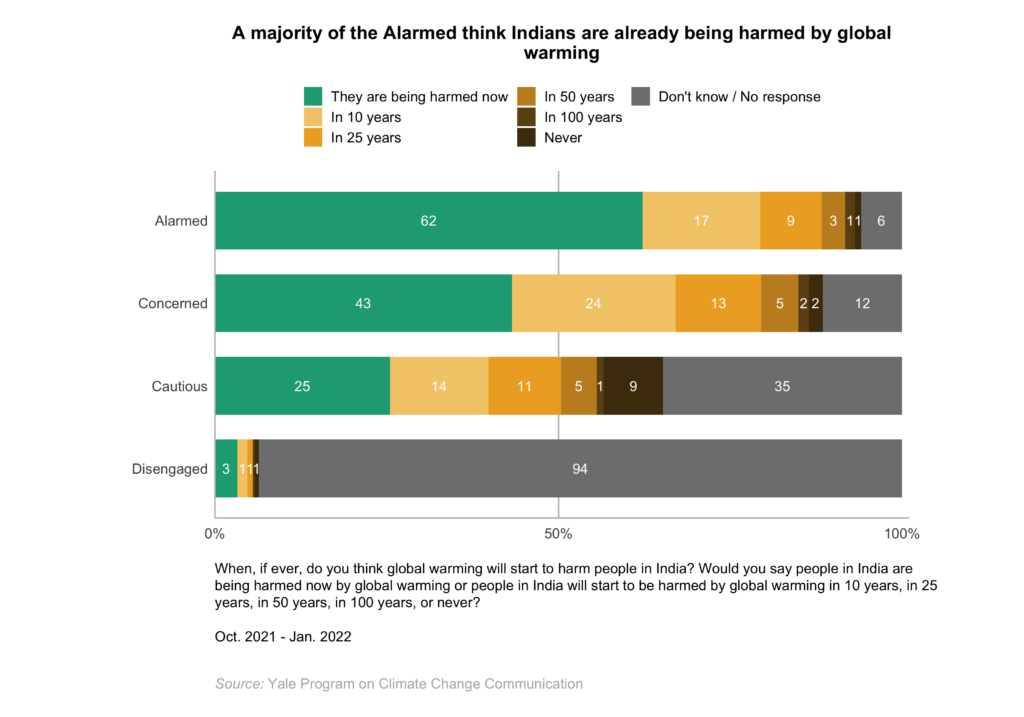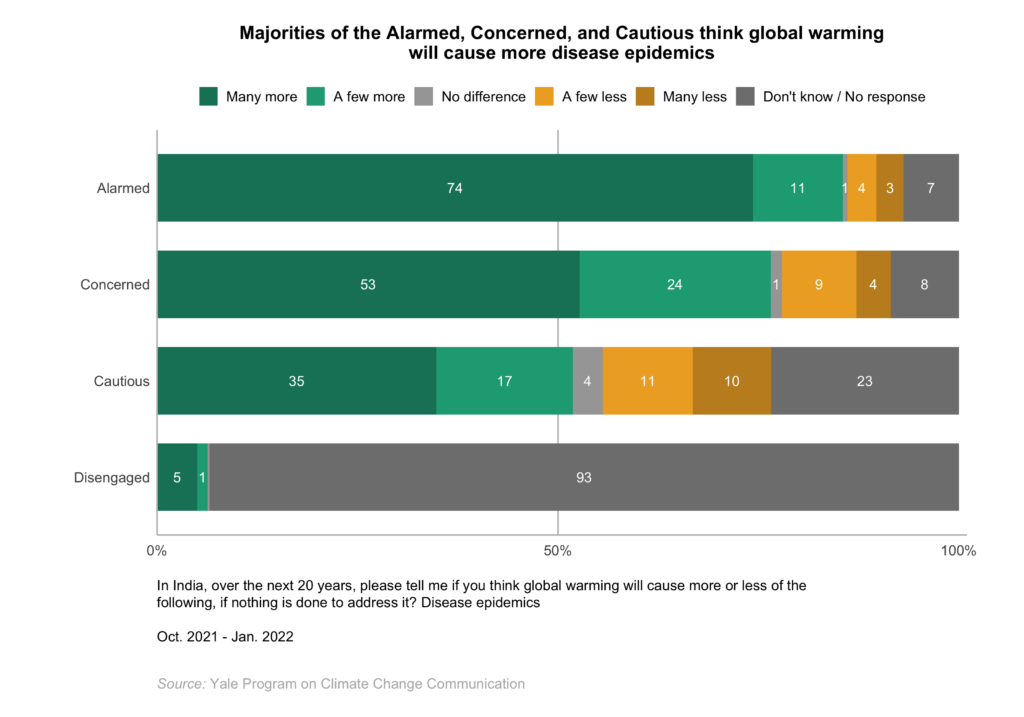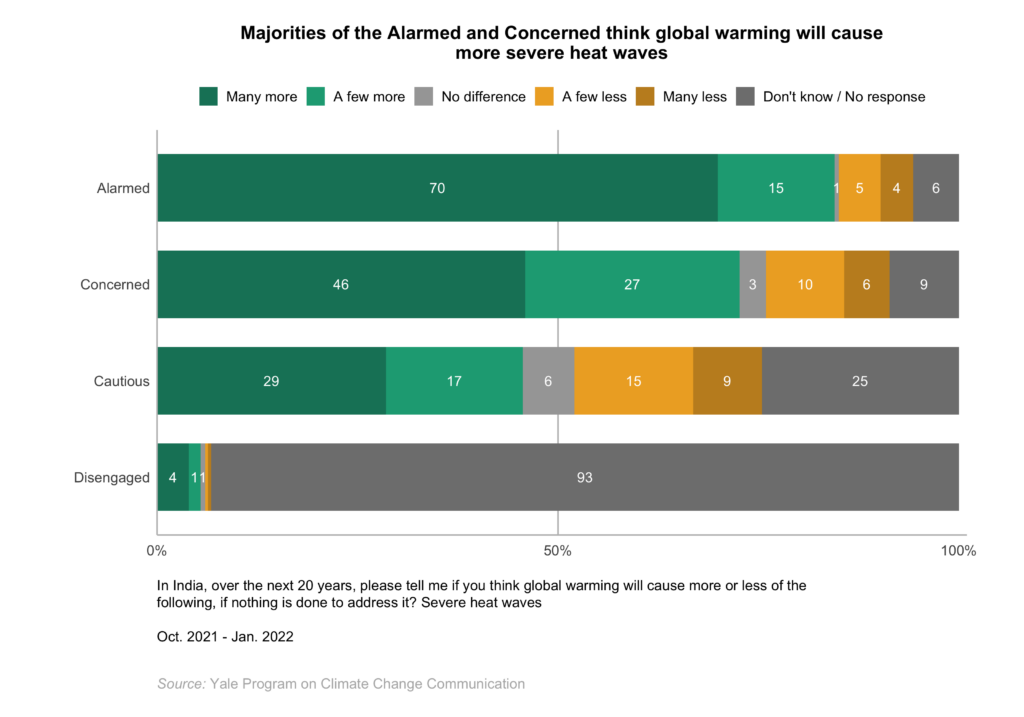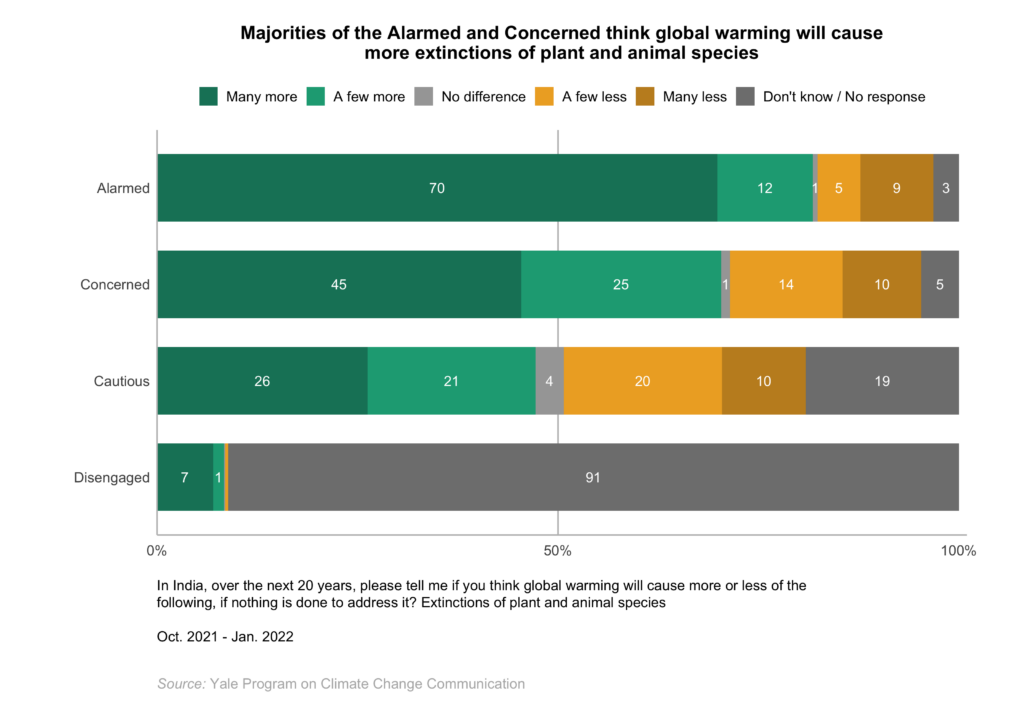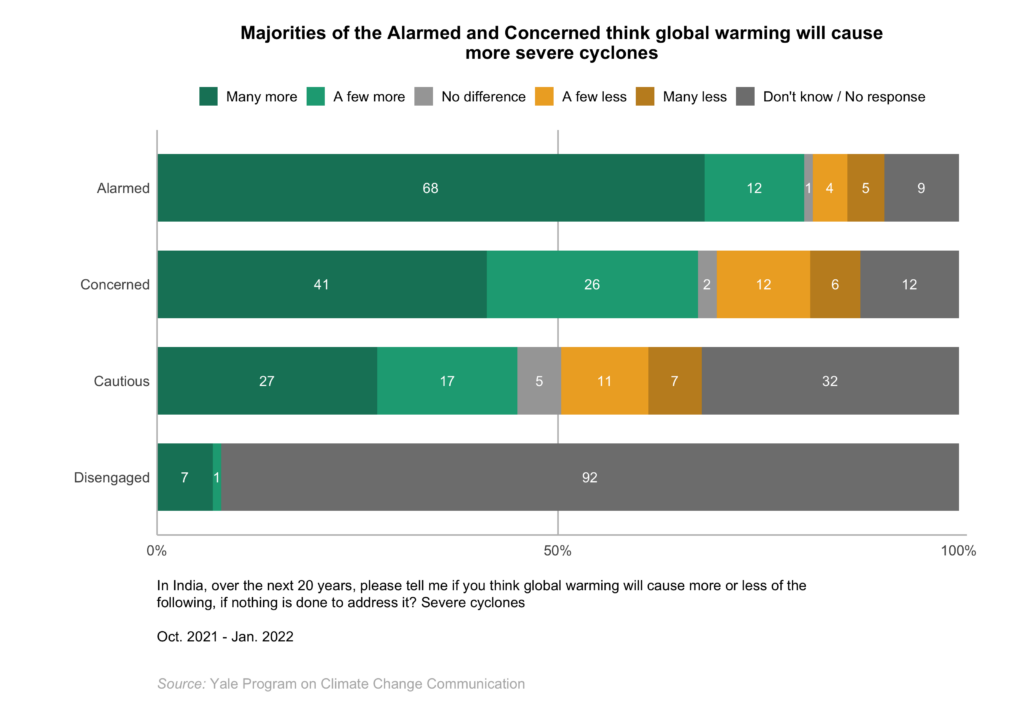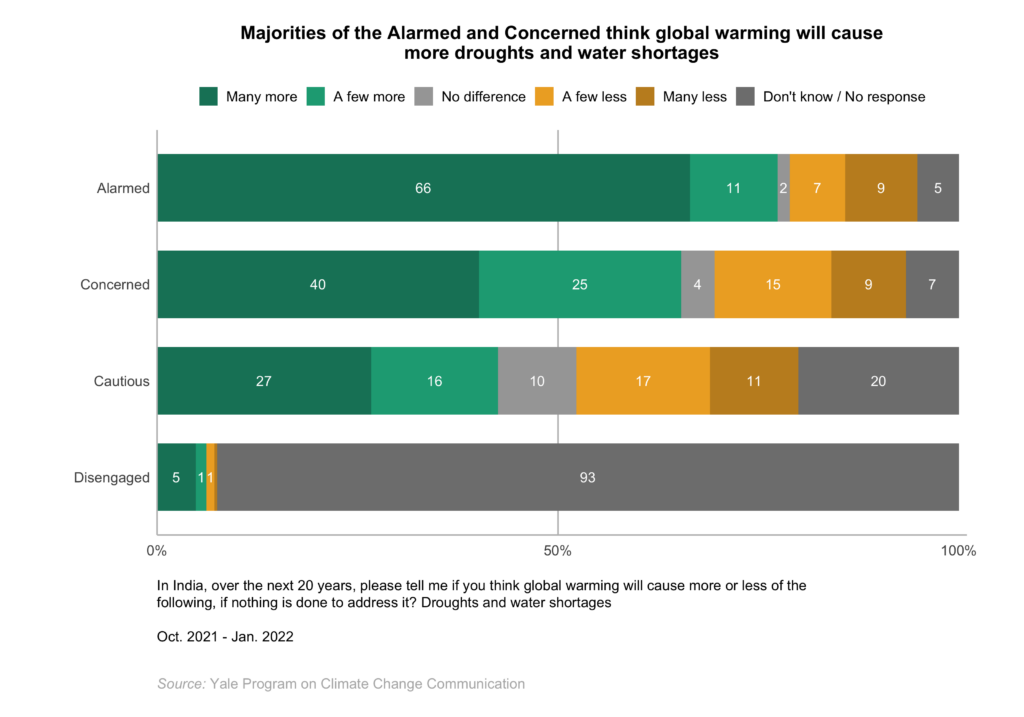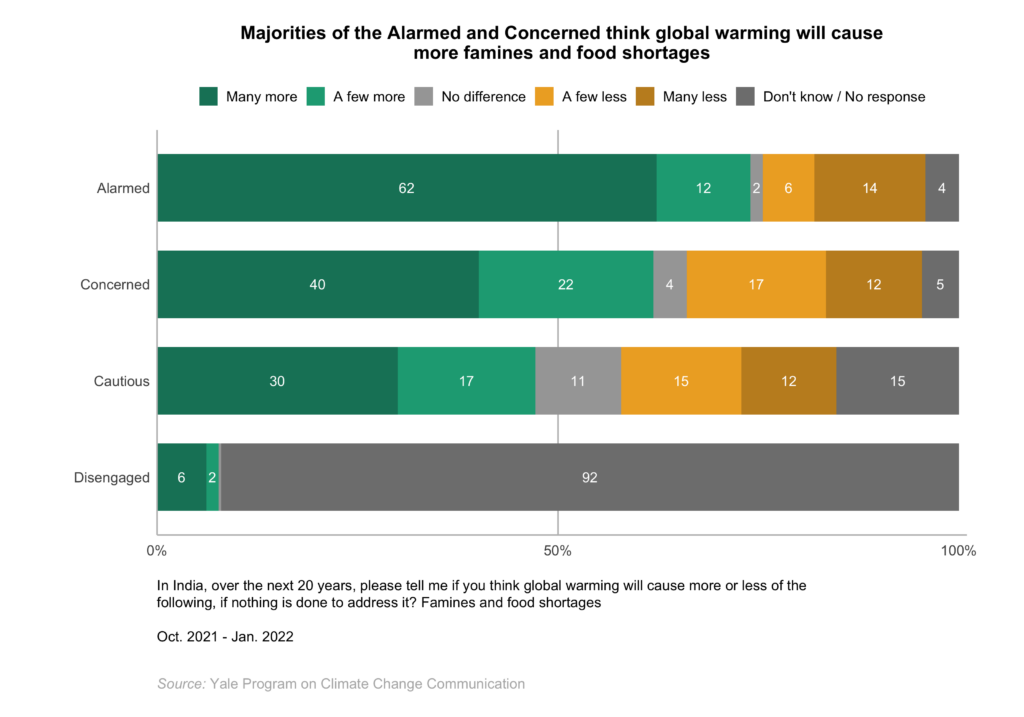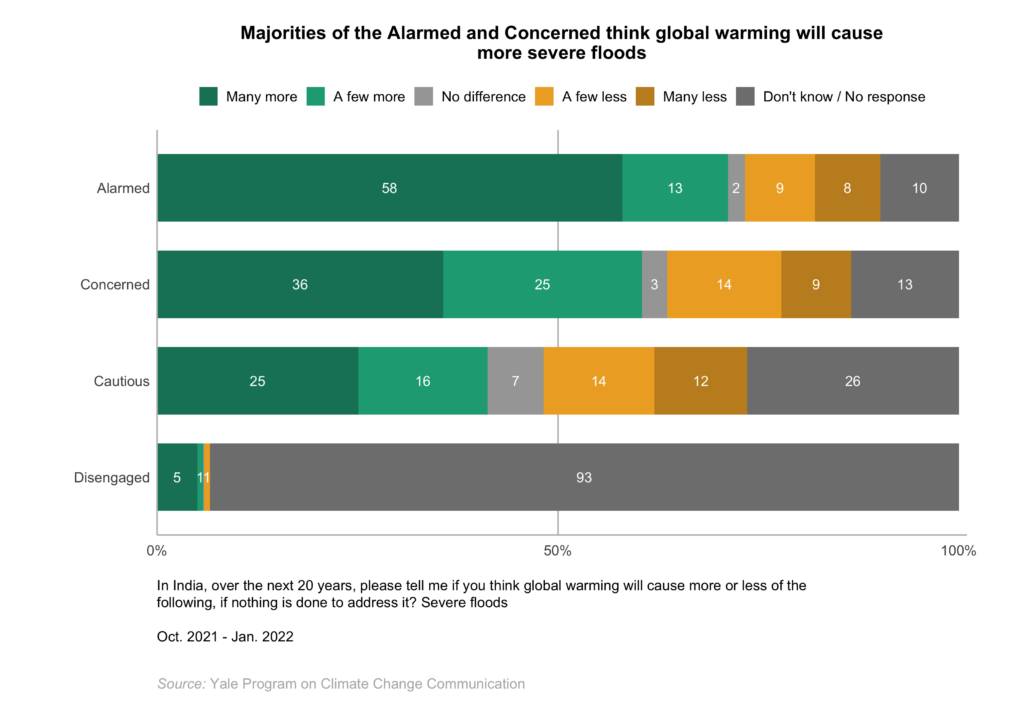Report · May 4, 2023
Global Warming’s Four Indias, 2022: An Audience Segmentation Analysis
By Anthony Leiserowitz, Jagadish Thaker, Matthew Goldberg, Matthew Ballew, Seth Rosenthal, Jennifer Carman, Liz Neyens, Sanguk Lee, Yashwant Deshmukh, Gaura Shukla and Jennifer Marlon
Filed under: Beliefs & Attitudes, Policy & Politics, Behaviors & Actions and Audiences
3. Global Warming Risk Perceptions
Measures of global warming risk perceptions include levels of worry about global warming, assessments of global warming’s impacts (e.g., heatwaves, droughts), and perceptions of how much it is harming or will harm various groups (e.g., people in India, future generations of people).Differences among the four segments in levels of worry about global warming and perceived risk to future generations and themselves and their family are partially driven by the use of these variables in the segmentation analysis – refer to Appendix: Methods
Alarmed
The Alarmed are the most worried about global warming and have the highest levels of risk perception. Nearly all of the Alarmed (94%) say they are either “very worried” (79%) or “somewhat worried” (15%) about global warming. Nearly all of the Alarmed think global warming will cause either “a great deal” or “a moderate amount” of harm to future generations of people (97%), plants and animal species (95%), people in India (93%), people in their community (93%), and/or themselves and their family (93%). The Alarmed are also the most likely to view global warming as an urgent personal threat – the majority think global warming is harming Indians right now (62%) and an additional 17% think it will harm Indians in the next 10 years. Large majorities of the Alarmed think global warming will have either “many more” or “a few more” dangerous impacts in India over the next 20 years, including disease epidemics (86%), severe heat waves (84%), extinctions of plant and animal species (82%), severe cyclones (81%), droughts and water shortages (77%), famines and food shortages (74%), and severe floods (71%).
Concerned
While the Concerned are less worried about global warming than the Alarmed and have lower levels of risk perception, large majorities still worry about it and view it as a serious threat. A large majority of the Concerned (86%) say they are either “very worried” (17%) or “somewhat worried” (69%) about global warming. Majorities of the Concerned think global warming will cause either “a great deal” or “a moderate amount” of harm to plants and animal species (79%), future generations of people (74%), people in India (73%), people in their community (63%), and/or themselves and their family (59%). Although the Concerned have lower personal risk perceptions and view global warming as less urgent than do the Alarmed, the majority either think that global warming is already harming Indians right now (43%) or that it will in the next 10 years (24%). Majorities of the Concerned also either think global warming will have “many more” or “a few more” dangerous impacts in India over the next 20 years, including disease epidemics (77%), severe heat waves (73%), extinctions of plant and animal species (70%), severe cyclones (67%), droughts and water shortages (65%), famines and food shortages (62%), and severe floods (60%).
Cautious
The Cautious are less worried about global warming than are the Alarmed and Concerned, and are less likely to perceive it as a serious threat. About four in ten Cautious (41%) say they are either “very worried” (15%) or “somewhat worried” (25%) about global warming, but about half (52%) either say they are “not very worried” (16%) or “not at all worried” (36%). While about half of the Cautious think global warming will cause “a great deal” or “a moderate amount” of harm to plants and animal species (51%) and/or people in India (48%), fewer think it will harm people in their community (36%), future generations of people (28%), and/or themselves and their family (24%). The Cautious also view global warming as a less urgent problem than do the Alarmed and Concerned – one in four (25%) think it is causing harm to Indians right now and an additional 14% think it will harm Indians in the next 10 years. The Cautious are also more uncertain in their risk perceptions than the Alarmed and Concerned. For instance, 35% of the Cautious don’t know when global warming will start to harm people in India or did not express an opinion. Although the Cautious are less likely than the Alarmed and Concerned to think the dangerous impacts of global warming in India will increase over the next 20 years, many do think there will be either “many more” or “a few more” disease epidemics (52%), famines and food shortages (47%), extinctions of plant and animal species (47%), severe heat waves (46%), severe cyclones (45%), droughts and water shortages (43%), and severe floods (41%).
Disengaged
The Disengaged are the segment most likely to say they don’t know or to not express an opinion when asked about their global warming risk perceptions (ranging from 75% to 99% across questions). Only one in five (20%) say they are either “very worried” (14%) or “somewhat worried” (6%) about global warming. Few of the Disengaged think global warming will cause “a great deal” or “a moderate amount” of harm to plants and animal species (6%), people in India (6%), people in their community (4%), future generations of people (1%), and/or themselves and their family (1%). Very few of the Disengaged think global warming is harming Indians right now (3%) or will in the next 10 years (1%). Additionally, few of the Disengaged think the dangerous impacts of global warming in India will increase over the next 20 years, including “many more” or “a few more” famines and food shortages (8%), extinctions of plant and animal species (8%), severe cyclones (8%), droughts and water shortages (6%), disease epidemics (6%), severe floods (6%), and severe heat waves (5%).



